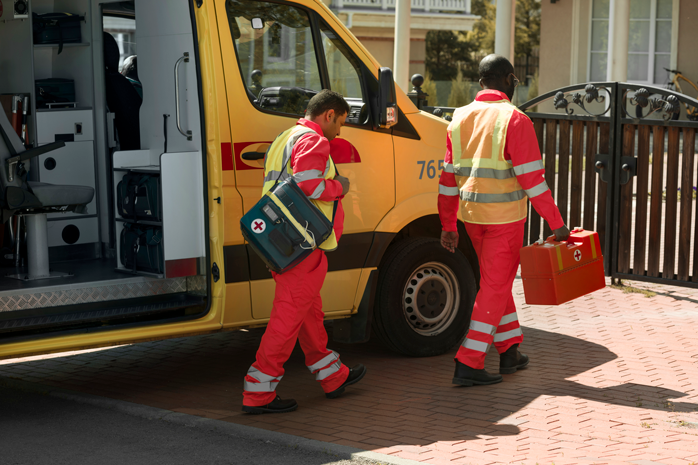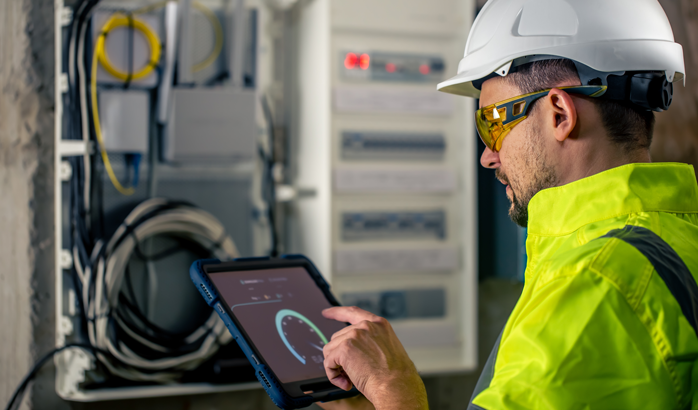Can AI Make Emergency Response Smarter and Faster?

The warehouse buzzed with energy as forklifts zipped between aisles, and workers managed inventory with precision. Suddenly, a chemical container tipped over, releasing a hazardous substance. Traditional safety systems would likely rely on a worker spotting the issue and manually raising the alarm—a process that could take precious minutes. In those critical moments, the spill could spread, endangering lives and causing irreversible damage. Now, imagine an AI-powered system that instantly detects the chemical leak, assesses its severity, and initiates a tailored response plan within seconds. This is not a scene from a sci-fi movie—it’s the groundbreaking reality of AI in emergency response today.
Emergencies are unpredictable by nature, making rapid and effective responses essential to minimizing harm. Yet, traditional systems often fall short in their ability to detect, assess, and act swiftly. AI is changing the game. By identifying threats early and coordinating seamless responses, artificial intelligence is transforming how organizations handle crises. Tools like VigilantAI empower businesses to act decisively when every second counts, ensuring safety and minimizing disruption.
Catering to Complex Emergencies with AI
Emergencies often present a complex interplay of variables—smoke, movement, heat, and human behavior—that can overwhelm traditional response systems. AI-powered solutions excel in processing this multifaceted data, enabling rapid and precise reactions to various crises.
Fire Detection: AI systems can identify early indicators of fires, such as subtle temperature increases or faint smoke, alerting emergency teams before visible flames emerge. For instance, California firefighters utilize AI to predict wildfire activity, allowing them to preemptively allocate resources. Upon receiving a 911 call, AI can forecast a fire’s trajectory within 18 to 20 seconds—a task that previously required hours—thereby enhancing response efficiency
Intruder Alerts: By analyzing movement patterns, AI can detect unauthorized access to restricted areas and promptly notify security personnel. The New York Police Department employs AI-powered facial recognition and extensive camera networks to monitor and respond to security breaches, demonstrating AI’s capability in enhancing surveillance and response.
Hazardous Material Spills: AI can process data from chemical sensors to detect spills and assess associated risks, ensuring responses are appropriately scaled to the severity of the incident. For example, AI-driven systems analyze environmental data to provide immediate alerts to authorities, facilitating timely evacuations and resource allocation during disasters.
Tools like VigilantAI integrate these capabilities into existing infrastructures, empowering businesses to address a wide spectrum of emergencies with enhanced speed and accuracy.
AI-Driven Coordination: Bridging the Communication Gap
Emergencies demand swift, coordinated action, yet miscommunication or delays often derail even the best-laid plans. Imagine a chaotic factory floor during a fire—manual alerts, fragmented responses, and teams working off incomplete information. This lack of coordination can escalate the crisis. AI-powered systems change the narrative by acting as the central nervous system for emergency response, ensuring every team has the right information at the right time.
Real-Time Alerts: Precision in the Moment
AI doesn’t just sound an alarm—it delivers precise, actionable details in real time. Whether it’s a chemical spill or an electrical fault, the system notifies all relevant teams instantly, specifying the nature, severity, and exact location of the issue. For instance, during a gas leak in a chemical plant, AI can determine the exact concentration levels and wind direction, helping responders secure the affected area quickly and minimize exposure risks.
Automated Action Plans: From Chaos to Order
In high-pressure situations, hesitation or human error can have dire consequences. AI steps in with pre-programmed response protocols tailored to specific emergencies. It can trigger immediate actions, such as shutting down machinery, initiating sprinkler systems, or sending targeted evacuation instructions to areas at risk. For example, during a warehouse fire in Germany, AI systems worked alongside firefighters by automatically sealing off unaffected sections of the facility to contain damage and protect valuable assets.
Dynamic Adjustments: Responding to the Unpredictable
Emergencies evolve rapidly, and static response plans often fail to keep up. AI continuously analyzes real-time data, adapting its recommendations as the situation unfolds. Take the case of a wildfire in California: AI not only alerted authorities about the fire but also updated evacuation routes dynamically based on wind changes and fire spread. This adaptability ensured a safer, more effective evacuation process.
Seamless Collaboration Across Teams
AI fosters collaboration by eliminating information silos. By integrating data from multiple sources—CCTV footage, environmental sensors, and team communication platforms—it provides a unified view of the situation. This shared perspective ensures that all stakeholders, from security personnel to emergency responders, are aligned and can act cohesively.
From Chaos to Control: How AI Enhances Emergency Coordination
In 2021, Dubai International Airport introduced AI-powered systems to manage emergency scenarios, drastically reducing response times. These systems streamlined communication between airport staff, emergency services, and local authorities, ensuring seamless operations even during high-stakes incidents. This highlights how AI is not just a tool but a transformative force in emergency management.
The Game-Changing Benefits of AI-Powered Emergency Response
Emergencies demand swift, precise action—and AI-powered systems are revolutionizing how organizations respond to crises. By integrating artificial intelligence into emergency management, businesses can drastically improve how they detect, manage, and even prevent critical incidents. Let’s explore how this transformative technology delivers unparalleled advantages while ensuring safety and efficiency
Speed and Accuracy: A Lifesaving Duo
Picture this: A fire breaks out in a manufacturing facility, but instead of relying on delayed alarms or manual reporting, an AI system immediately detects rising temperatures and smoke. Within seconds, it pinpoints the exact location, alerts relevant teams, and initiates pre-programmed protocols to mitigate the damage. Speed is everything in emergencies, and AI’s ability to analyze data and trigger actions in real time ensures minimal delays in detection and response.
But speed alone isn’t enough. False alarms can divert critical resources and erode trust in emergency systems. AI eliminates this chaos by offering laser-sharp accuracy. For instance, in a high-rise building, AI can differentiate between harmless steam from a shower and smoke from a fire, ensuring that responders focus only on genuine threats. By reducing false alarms and providing precise insights, AI ensures resources are directed where they’re needed most, saving both time and lives.
Scalability and Proactive Risk Management
Whether it’s a small chemical spill in a lab or a city-wide emergency like a wildfire, AI systems scale effortlessly to handle crises of varying complexities. Traditional systems often struggle to adapt to larger, more intricate scenarios, but AI thrives in dynamic environments. For example, during California wildfires, AI-driven systems monitored environmental data to predict fire spread patterns, allowing responders to plan evacuations and resource deployment effectively.
What truly sets AI apart is its proactive approach. AI doesn’t just respond to emergencies; it helps prevent them. By analyzing historical and real-time data, AI identifies potential hazards before they escalate. Imagine a logistics hub where AI detects recurring near-misses involving forklifts and recommends adjustments to traffic patterns or schedules to prevent accidents. This proactive risk management transforms emergency response from a reactive necessity to a preemptive advantage.
VigilantAI: Leading the Charge in Smarter Emergency Response
At the forefront of this innovation is VigilantAI, a platform that turns these capabilities into actionable solutions tailored for businesses. Its key features include:
- Real-Time Hazard Detection:VigilantAI seamlessly integrates with cameras and sensors to detect risks like fires, spills, and unauthorized access instantly, ensuring threats are caught early.
- Automated Alerts and Protocols:: The system doesn’t just notify relevant teams—it activates pre-set emergency plans, such as evacuations or machinery shutdowns, reducing reliance on manual interventions.
- Predictive Insights:By analyzing patterns and historical data, VigilantAI identifies trends and offers recommendations to mitigate risks before they become emergencies.
For businesses aiming to enhance their emergency strategies, VigilantAI provides the speed, precision, and foresight needed to protect both people and assets effectively.
By combining the unmatched speed and accuracy of AI with proactive risk management, tools like VigilantAI are reshaping emergency response. In a world where every second counts, embracing AI isn’t just a smart decision—it’s a necessary step toward safer, more resilient operations.
The Next Chapter in Emergency Response: AI at the Helm
AI has proven its potential to revolutionize emergency response, turning what once was a reactive process into a proactive advantage. By combining real-time detection, intelligent coordination, and predictive insights, AI ensures that businesses are better equipped to handle the unexpected.
As tools like VigilantAI continue to evolve, the future of emergency management is one where risks are mitigated, lives are saved, and safety becomes a shared responsibility. Ready to see how VigilantAI can transform your approach to emergencies? Contact us today to learn more about creating safer, smarter workplaces.
This blog maintains a conversational and story-driven tone, emphasizing AI’s transformative role in emergency response while subtly highlighting VigilantAI’s value. Let me know if additional tweaks are needed!




